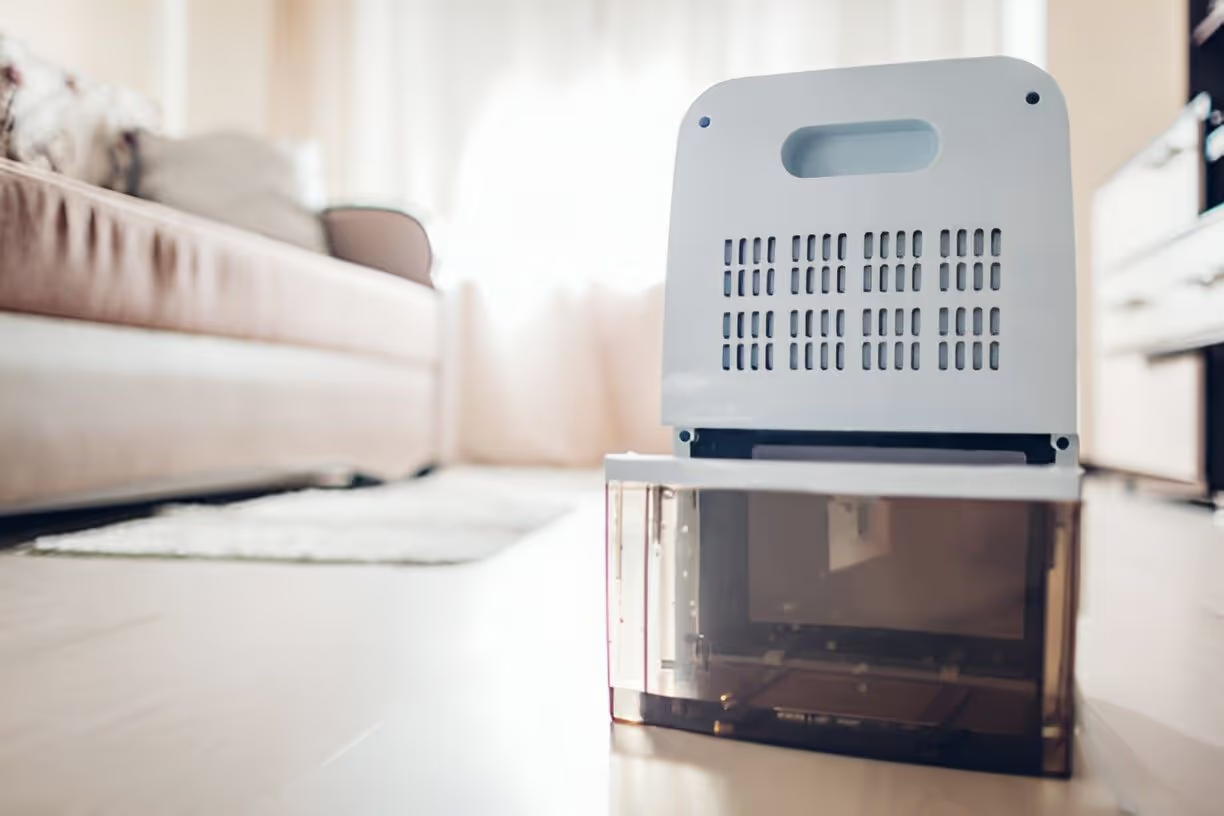Whole House Dehumidifiers in Clearwater, FL


Why whole-house dehumidification matters in Clearwater, FL
- Coastal humidity and daily sea breezes bring persistent moisture into homes, especially older or poorly sealed properties.
- High indoor humidity supports mold and mildew growth on walls, windows, attics, and within insulation or wall cavities.
- Excess moisture makes air feel warmer, so air conditioners run longer and work harder.
- For homeowners with asthma, allergies, wood floors, or electronics, consistent humidity control prevents damage and health triggers.
Common whole house dehumidifier issues in Clearwater homes
- Under-sizing: Units that match only square footage (not moisture load) fail during humid summers.
- Improper placement: Installing away from the HVAC return or without proper ducting reduces whole-home coverage.
- Drainage failures: Condensate lines clogged by debris or routed improperly lead to backups and water damage.
- Corrosion from salt air: Coastal homes need corrosion-resistant components and regular inspections.
- Poor controls integration: Dehumidifiers not integrated with the HVAC thermostat can cause short cycling or conflicts with AC operation.
Types of whole-house dehumidifier installations
- Ducted/Plenum-mounted units: Mounted at the furnace/air handler return plenum for central control and balanced distribution. This is the most common solution for Clearwater homes with forced-air systems.
- Inline duct units: Installed in supply or return duct runs to serve multiple zones; useful when the air handler location limits direct mounting.
- Stand-alone packaged units: Floor-mounted systems placed in mechanical rooms or garages that connect to the ductwork; chosen when plenum mounting is not possible.
- Desiccant vs refrigerant systems: Refrigerant dehumidifiers are typical in hot-humid climates like Clearwater. Desiccant systems can be used in specialty applications but are less common for standard residential work.
Sizing and capacity selection for Clearwater homes
Sizing a whole-house dehumidifier is about moisture load, not just square footage. Key factors include:
- Home size and ceiling height
- Building envelope tightness (air leaks increase moisture load)
- Number of occupants and daily activities (cooking, showers, laundry)
- Presence of crawl spaces, basements, or attached garages that add moisture
- Local climate patterns and seasonal humidity spikes
Proper selection uses a moisture-load assessment and aims for a unit capacity that maintains indoor relative humidity in a comfortable, safe range for Clearwater conditions.
Target humidity and comfort expectations
- For Clearwater, aim for relative humidity between 45% and 50% for comfortable, mold-resistant indoor air during warm months.
- Levels below 40% can be uncomfortable and increase static; levels above 60% encourage mold growth.
- Once a properly sized system is installed, occupants typically notice less stickiness, fewer odors, shorter AC cycles, and improved perceived coolness even at the same thermostat setting.
Integration with existing HVAC
- Whole-house dehumidifiers are usually tied into the HVAC return plenum and controlled by a dedicated humidistat or integrated with the home thermostat.
- Proper integration allows the dehumidifier to operate independently of cooling cycles when needed, or in tandem with AC to maximize efficiency.
- A balanced installation ensures airflow and static pressure remain within the HVAC system’s design limits, avoiding reduced airflow or system stress.
Typical installation and drainage options
Installation steps generally include site assessment, duct modifications, electrical hookup, condensate routing, and commissioning:
- Gravity drain: Uses existing low points and plumbing ties when elevation permits.
- Condensate pump: Required when downhill gravity drain is not available; pumps condensate to nearby drains or exterior lines.
- Condensate to HVAC drain: Many installations route dehumidifier condensate into the air handler’s drain. Line sizing and trap details must follow local plumbing practices.
- Outdoor routing: Where permitted, condensate can be routed to approved exterior drainage points, mindful of local codes and landscaping erosion.
Energy considerations
- Whole-house units are more efficient than multiple portable units and eliminate the need to move devices between rooms.
- Reducing indoor humidity can reduce air conditioner runtime because drier air carries less latent heat; this can lower cooling energy use.
- Look for energy-efficient models with variable-speed compressors and smart controls to match operation to actual moisture load while minimizing electrical demand.
- Coastal salt exposure necessitates corrosion-resistant components to maintain long-term efficiency.
Maintenance and long-term care
Regular maintenance keeps a whole-house dehumidifier running reliably in Clearwater’s humid, coastal environment:
- Clean or replace intake filters periodically to maintain airflow.
- Inspect and clear condensate lines and traps at least annually to prevent clogs and leaks.
- Check coils and drain pans for signs of mold, scale, or corrosion; clean as needed.
- Verify humidity sensor calibration and control settings seasonally to match occupancy and weather.
- Schedule an annual HVAC and dehumidifier inspection to confirm electrical connections, refrigerant levels, and mechanical integrity—especially important in salty coastal air.
Benefits specific to Clearwater, FL homeowners
- Significant reduction in mold and mildew risk on coastal homes vulnerable to persistent moisture.
- Improved indoor comfort without lowering thermostat settings, which can lower cooling costs.
- Protection for wood floors, cabinetry, and home structure from moisture-related warping and decay.
- Reduced allergen load from dust mites and mildew that thrive in high humidity.
- Fewer portable dehumidifiers cluttering living spaces and no need to monitor multiple buckets and drains.
Whole-house dehumidification addresses the root cause of many comfort and building-health problems common to Clearwater’s humid climate. When sized correctly, integrated with your HVAC, and maintained regularly—with attention to coastal corrosion and proper drain routing—you’ll gain steady, measurable improvements in air quality, comfort, and home durability.
Service Areas


